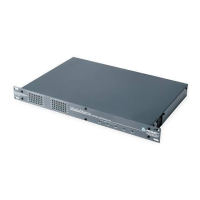
Do you have a question about the Peavey MediaMatrix MM-8802 and is the answer not in the manual?
| Type | Digital Signal Processor |
|---|---|
| Sample Rate | 48 kHz |
| Bit Depth | 24-bit |
| Inputs | 8 |
| Outputs | 8 |
| Control Interface | Ethernet |
| Power Supply | 100-240V AC, 50/60 Hz |
| Control | Software-based via Ethernet |
Expresses gratitude for the purchase and introduces the manual.
Lists the items included with the MM-8802.
Mentions previous Peavey products replaced by the MM-8802.
Outlines the assumed knowledge for using the MM-8802.
Explains the audio signal path through the MM-8802 and MediaMatrix system.
Describes the relationship between the MM-8802 hardware and its software components.
Explains how to identify installed input modules using rear panel connectors and software.
Explains how to adjust settings using DIP switches in legacy mode.
Continues the explanation of software controls, including dialog boxes for sensitivity and output.
Details the rear panel connectors and their functions (Power, Fault Contact, Digital Interface, CV Inputs, Logic Outputs, Audio I/O).
Explains how to make balanced analog audio connections using Euro connectors.
Describes the eight CV input ports, their wiring, and internal circuit.
Illustrates connecting a rotary control to a CV input port for volume control.
Explains how to use an external DC power supply with CV ports and notes voltage limits.
Provides additional information and examples for CV input port usage.
Describes the eight TTL logic output ports and their current limitations.
Shows how to connect an LED to a logic output port for visual status indication.
Guides through calibrating CV inputs using software controls and external devices.
Describes using the MM-8802 with older MediaMatrix systems via the legacy DB-9 connector.
Details the wiring standard, color code, and termination process for CAT 5 cables.
Explains the importance and process of registering the product warranty.
Answers common questions about MM-8802 compatibility, connections, and features.
Details general specifications like quantization, interface, power, and compliance.